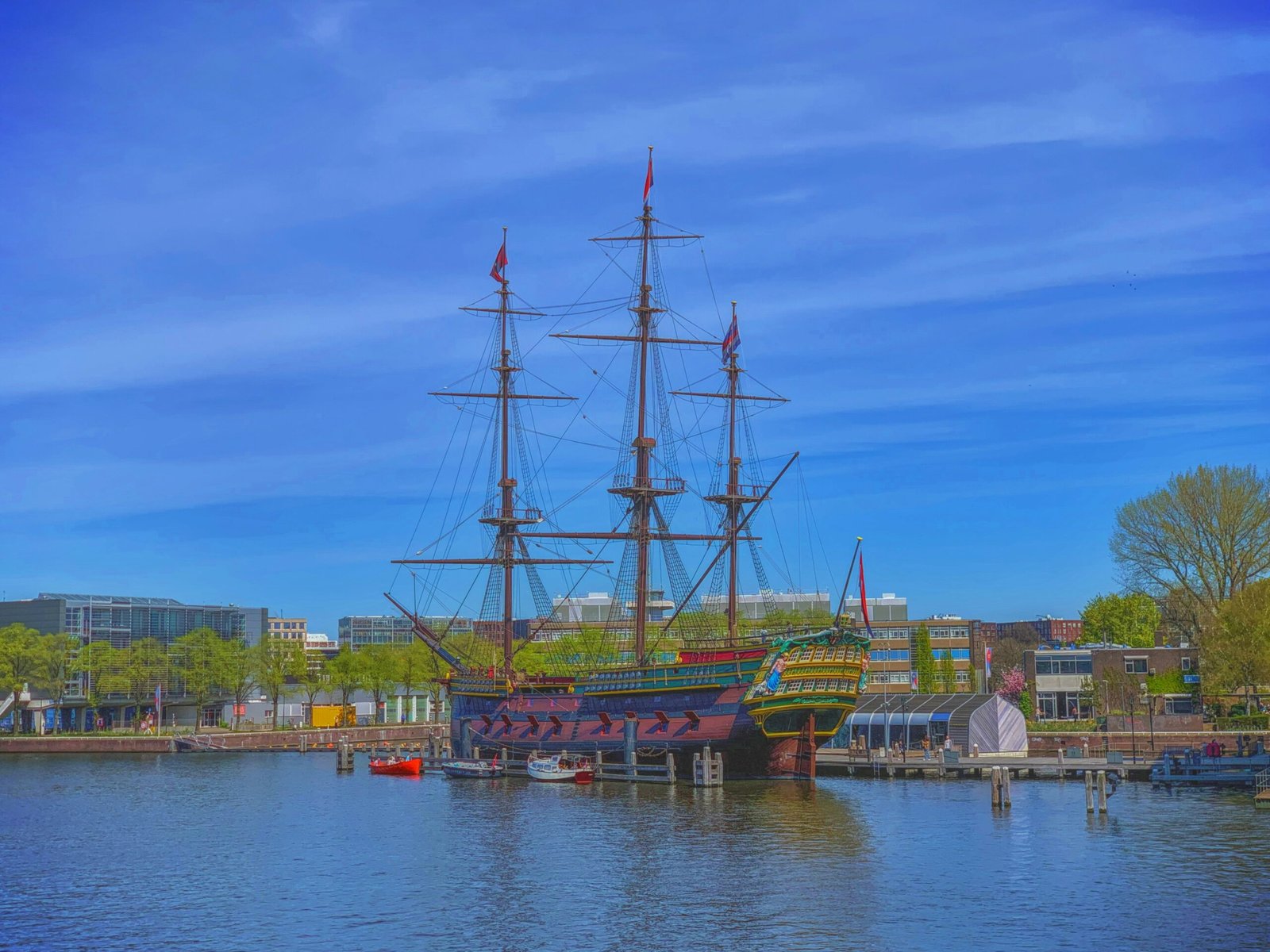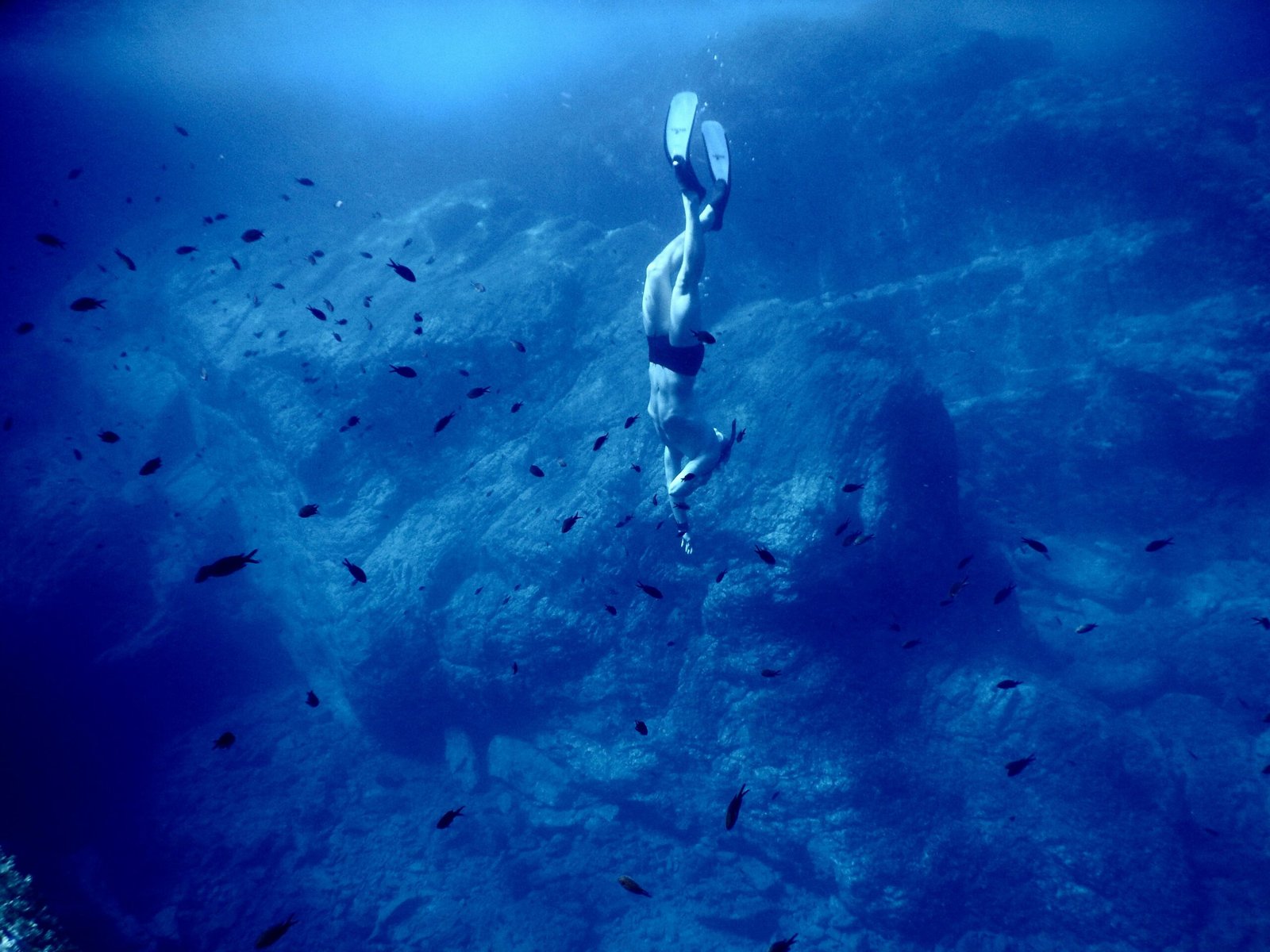Introduction to Piracy
Piracy, a term commonly associated with the act of attacking and robbing ships at sea, has a complex history that has evolved over centuries. Traditionally, a pirate is defined as an individual who engages in acts of robbery and violence on the high seas, often targeting commercial vessels. Throughout history, piracy has manifested in various forms, influenced by evolving societal conditions, economic factors, and the quest for adventure. This multifaceted phenomenon can be traced back to ancient seafarers, but it gained significant notoriety during the so-called Golden Age of Piracy in the late 17th and early 18th centuries.
The rise of piracy can largely be attributed to several interrelated factors. Economic hardship often fueled the ambition of individuals seeking to escape their dire circumstances. In regions plagued by poverty or limited opportunities, the siren call of the sea became appealing. Pirates found solace in the lawlessness of the ocean, challenging not only the prevailing social order but also establishing their own codes of conduct and governance. This quest for freedom on the high seas symbolized a rejection of societal constraints.
Moreover, the allure of adventure played a significant role in attracting individuals to piracy. The romanticized portrayal of pirates in folklore and popular media often obscures the harsh realities of their lives but nevertheless underscores a desire for excitement and autonomy. Additionally, the increasing globalization of trade during these periods created lucrative targets for those willing to take risks. Compounding these factors, the presence of powerful empires and the naval battles that ensued during periods of conflict often rendered certain maritime territories chaotic and ripe for predation.
Understanding piracy requires a comprehensive examination of its historical context, as well as the motivations and aspirations of those who became pirates. The interplay of economic circumstances, social inequalities, and the freedom sought amidst the perils of the sea underscores the intricate narrative of piracy that continues to intrigue scholars and enthusiasts alike.
The Evolution of Piracy Through the Ages
The history of piracy spans thousands of years, tracing its roots back to ancient civilizations. In the Mediterranean, the early sea raiders were often motivated by the desire for wealth and resources, disrupting trade routes established by empires. The Phoenicians and Greeks engaged in acts that could be categorized as piracy, targeting ships carrying valuable cargo. Similarly, during the Roman Empire, piracy flourished, particularly as the Romans expanded their maritime trade. The Romans retaliated by conducting extensive campaigns to quell piracy, underscoring its significance as a threat to commerce.
As time progressed into the early Middle Ages, the North Atlantic witnessed the emergence of Viking raiders. These formidable seafarers were notorious for their swift longships, which enabled them to launch surprise attacks on coastal settlements and trading routes. Their motivations were not solely plunder; many Vikings sought new land for settlement and resources to sustain their communities. This period laid the foundation for a more organized approach to piracy as strategic targets expanded beyond mere ships to include entire coastal towns.
The late 17th century marked the onset of the Golden Age of Piracy, predominantly in the Caribbean. During this period, pirates such as Blackbeard and Captain Kidd became infamous for their exploits. The motivations transitioned from subsistence raiding to acquiring vast fortunes through the seizure of valuable merchant vessels. The expansion of European empires and their lucrative trade networks made them prime targets for piracy. Technological advancements in shipbuilding and naval warfare facilitated a significant evolution in piracy tactics, allowing pirates to operate with increased efficiency and sophistication.
Overall, the transformation of piracy reflects broader socio-economic shifts and technological advancements throughout history. From ancient Mediterranean raiders to the notorious pirates of the Caribbean, each era contributed to the evolving narrative of piracy, revealing a complex interplay of greed, survival, and adventure on the high seas.
Famous Pirates: Legends and Lore
Throughout history, various individuals have emerged as notorious figures in the realm of piracy, each contributing to the mystique and allure associated with these maritime marauders. Blackbeard, also known as Edward Teach, stands out as one of the most infamous pirates of the early 18th century. Renowned for his fearsome appearance, complete with slow-burning fuses in his beard that created a devilish aura, Blackbeard commanded the pirate ship Queen Anne’s Revenge. His exploits ranged from blockades and theft to acts of intimidation that instilled fear in both enemies and allies alike. Despite his violent lifestyle, the legend of Blackbeard continues to captivate the imagination, showcasing the romanticized allure of piracy in popular culture.
Another notable figure is Captain William Kidd, initially a respected privateer before turning to piracy during the late 17th century. Kidd’s transformation from legitimate sailor to infamous pirate is emblematic of the complexities surrounding the piracy era, where legality often blurred due to the tumultuous political climate. His capture and trial for piracy, despite his initial claims of fighting against other pirates, only fueled the fascination with his character and the morality of his actions. The legacy of Captain Kidd reflects the duality of the pirate culture, where many were once viewed as heroes before their reputations became tainted.
Anne Bonny, one of the few well-documented female pirates, showcases the rebellious spirit often romanticized in pirate narratives. Born in Ireland and raised in the American colonies, Bonny’s life of piracy began after her involvement with the infamous Calico Jack Rackham. Her fierce fighting skills and audacious behavior challenged contemporary gender norms, allowing her to stand alongside her male counterparts in the ruthless world of piracy. The stories surrounding her often emphasize her defiance and resilience, contributing to a layered perspective on female pirates in history.
These legendary pirates, among others, have greatly shaped the narrative surrounding piracy, blending fact with fiction. Their lives and exploits not only offer a glimpse into the turbulent world of the seas but also highlight how these characters have been celebrated within literature, film, and folklore. As such, the modern depiction of piracy is often more a product of legend than reality, yet their stories continue to fascinate audiences today.
Pirate Life at Sea
The daily lives of pirates were shaped by a unique blend of camaraderie, harsh living conditions, and a code of conduct that governed their behavior. Life aboard pirate ships was not merely a pursuit of treasure; it involved navigating the challenges of the ocean while adhering to a social structure that set pirates apart from common sailors. Pirates often formed their own codes, such as the famous “Pirate Code,” which outlined the rules and expectations for crew members.
One of the most notable features of pirate life at sea was the sense of solidarity among crew members. The shared experience of life on a pirate ship, coupled with the dangers that they faced from naval forces and rival pirates, forged strong bonds among crew members. This camaraderie was crucial; in a world where lawlessness reigned, the success of a pirate crew relied significantly on the mutual trust and cooperation among its members.
Despite the freedom that piracy offered, life at sea was fraught with difficulties. Crew members endured harsh conditions, including limited supplies, sickness, and the ever-present threat of shipwreck. The living quarters were often cramped and unsanitary, adding to the hazards they faced daily. While some pirates revelled in the lawless lifestyle, many experienced a stark reality that included hunger, fatigue, and the omnipresent threat of defeat in battle.
Within this unique society, a semblance of governance existed. Pirate ships often operated under a democratic system, where decisions were made collectively. Captains were typically chosen based on their skills and leadership abilities, while all crew members had a voice in decisions, especially concerning shares of plunder. This balance between lawlessness and governance made pirate life not just a chaotic existence, but a complex social structure that has fascinated historians and the public alike.
Economic Aspects of Piracy
Throughout history, piracy has significantly influenced maritime economies, particularly during the Golden Age of Piracy in the late 17th and early 18th centuries. Pirates primarily targeted merchant ships traversing lucrative trade routes, which included the Caribbean Sea, the Spanish Main, and the waters surrounding the American colonies. These routes were essential for transporting valuable goods such as gold, silver, spices, and textiles from the New World to Europe. The lure of such wealth made these vessels prime targets for pirate attacks.
The nature of goods that pirates plundered played a crucial role in the economic dynamics of the time. Pirates would often seize cargoes of sugar, tobacco, rum, and other commodities highly valued in European markets. This not only provided the pirates with instantaneous riches but also disrupted the established trade networks, affecting the economies of both the European powers and their colonies. The loss of goods to piracy often led to increased prices for consumers and significant losses for merchants, prompting calls for stronger naval defenses and protective measures for shipping lanes.
Furthermore, piracy had far-reaching implications for maritime laws and international trade policies. The rampant activities of pirates prompted nations to develop comprehensive laws aimed at curbing piracy and protecting trade vessels. For instance, the introduction of privateering allowed governments to authorize private ships to attack enemy commerce, blurring the lines between legitimate trade and outright piracy. This interaction created a complex economic environment where trade and piracy coexisted, revealing how opportunistic behaviors contributed to broader economic landscapes.
Despite its negative implications, piracy also presented economic opportunities for those involved, from the pirates themselves to the communities supporting them. The prospect of acquiring untold wealth motivated many to engage in piracy, influencing local economies in ports that furnished supplies and shelter for these marauders.
The Response to Piracy: Law and Order on the Seas
The threat of piracy has prompted various governments and naval powers throughout history to take decisive action to curb these lawless acts at sea. The emergence of naval forces specifically tasked with combating piracy marked a significant turning point in maritime law enforcement. Countries such as England, Spain, and France recognized that left unchecked, pirates could disrupt trade and threaten national security. This realization led to the development of dedicated naval fleets, equipped to patrol commercial shipping lanes and engage with pirate ships directly.
In addition to the formation of naval forces, governments instituted a series of anti-piracy laws designed to deter prospective pirates. These laws not only criminalized piracy but also defined the legal framework for prosecuting those accused of such crimes. The severity of these laws reflected the seriousness with which governments viewed the threat of piracy. Offenders often faced swift trials, notorious for their expediency. The legal process commonly resulted in harsh penalties, including execution, which served to instill fear among potential criminals and maintain order at sea.
Consequences for captured pirates extended beyond immediate punishment. The systemic legal approach included public trials, which acted as a form of deterrence to others who might consider maritime crime. These proceedings were often held in port cities, drawing crowds eager to witness the fate of notorious figures. Such public spectacles emphasized the gravity with which authorities regarded piracy and reinforced societal norms that condemned such behavior. Over time, these efforts contributed to diminishing piracy’s prevalence, ultimately leading to a greater sense of security for commercial maritime trade.
Throughout history, the response to piracy involved a complex interplay of naval power, legislation, and social order. The establishment of maritime law and the firm actions taken against pirates were crucial in shaping the history of piracy and its eventual decline under the concerted efforts of governments and naval authorities.
The Decline of Piracy
The golden age of piracy, predominantly in the late 17th and early 18th centuries, witnessed a surge in acts of maritime robbery. However, by the end of this period, several significant factors contributed to the decline of piracy. One critical aspect was the increase in naval patrols by European powers, especially the British and Spanish navies. These governments recognized the threat posed by pirates to international trade and national security, leading to the deployment of dedicated naval forces to combat piracy. The presence of these fleets disrupted traditional pirate routes and made coastal waters more hazardous for illegal operations.
Additionally, changes in global trade routes played a vital role in the decline of piracy. The shift in commerce towards more secure and fortified ports, coupled with the establishment of lucrative land-based trade opportunities, diminished the appeal of piracy as a lucrative occupation. As merchants adapted to these changes, they sought alliances with naval forces for protection rather than relying on the fearsome reputation of pirates.
Another pivotal element was the introduction of international laws governing maritime conduct. Treaties and conventions began to emerge, setting legal frameworks for the treatment of pirates. This legal recognition of maritime piracy as a crime discouraged potential recruits from turning to a life of crime, as stricter penalties and an organized system of justice became more commonplace. In conjunction with these developments, the Caribbean, once notorious as a piracy haven, saw a decline in such activities as colonial powers enforced stricter regulations.
Over time, petty piracy transformed into more organized crime networks on land, leading to the rise of banditry as an alternative. Thus, piracy not only faced increasing challenges from naval forces and legal structures but also adapted to shifts in society, culminating in its substantial decline by the 19th century.
Modern Piracy: Echoes of the Past
The phenomenon of piracy persists into the modern era, revealing striking parallels with its historical counterparts. Contemporary pirates, particularly in regions such as Southeast Asia and the waters off the coast of Somalia, often mirror the motivations and methods of their infamous predecessors. Just as historical pirates pursued wealth and freedom on the high seas, modern-day counterparts frequently resort to piracy driven by economic desperation and political instability.
The motivations behind modern piracy can often be traced to the same themes that fueled historical exploits: the quest for financial gain, lack of opportunity, and socio-economic disenfranchisement. For instance, in Somalia, the collapse of the central government led to chaos and widespread poverty, enabling pirate groups to thrive by hijacking commercial vessels for ransom. Similarly, in Southeast Asia, fisheries depletion and illegal fishing practices compel local populations to engage in piracy as a means of survival. This overlap highlights a continuum of lawlessness that challenges the maritime community.
Moreover, the methods employed by these contemporary pirates exhibit a blend of old tactics and new technology. While historical pirates relied on swift ships and firearms, modern pirates often use speedboats, sophisticated navigation systems, and even advanced weaponry to execute their plans. The evolution of piracy is evidenced by documented incidents involving hijackings, hostage-taking, and the demand for ransoms, strongly echoing the legendary voyages of notorious pirates like Blackbeard and Captain Kidd.
Governments and international organizations face significant challenges in combating modern piracy. Efforts to curtail this maritime crime involve a complex interplay of naval operations, legal frameworks, and policy initiatives. The partnerships between nations to enhance security and implement effective counter-piracy strategies illustrate the need for a cohesive response akin to those employed in addressing historical piracy. The legacy of piracy continues to shape the political and economic landscape, both in the past and present.
The Legacy of Pirates in Popular Culture
Piracy has captivated the human imagination for centuries, escaping the confines of historical fact to seep into the realms of literature, film, and other media. This romanticization of pirates often blends truth and fiction, leading to a compelling portrayal that highlights both their adventurous spirit and their often nefarious deeds. Iconic characters such as Captain Hook from J.M. Barrie’s “Peter Pan” and the notorious Jack Sparrow from Disney’s “Pirates of the Caribbean” are shining examples of how pirates are depicted as swashbuckling figures filled with charm and charisma, rather than as the ruthless criminals they often were.
The imagery associated with pirates—complete with eyepatches, tricorn hats, and the infamous Jolly Roger flag—has become synonymous with the notion of the seafaring outlaw. Such depictions have not only popularized piracy but have also helped to shape public perception, often emphasizing the allure of freedom and adventure on the high seas. As these representations evolved in various artistic forms, pirate lore became steeped in heroism, resulting in a dichotomy where actual historical pirates are overshadowed by their larger-than-life counterparts in popular narratives.
This blending of reality and imagination serves to create a compelling mythology around piracy, influencing how history is understood and taught. Film adaptations, novels, and even video games have taken creative liberties, showcasing pirates as figures of rebellion rather than mere criminals. Such portrayals continue to impact society’s fascination with piracy, leading to merchandise and themed events that celebrate the pirate archetype. Ultimately, the legacy of pirates in popular culture remains a powerful narrative that both entertains and contributes to a complex understanding of their place in history, inviting a continued exploration of the line between myth and reality.



